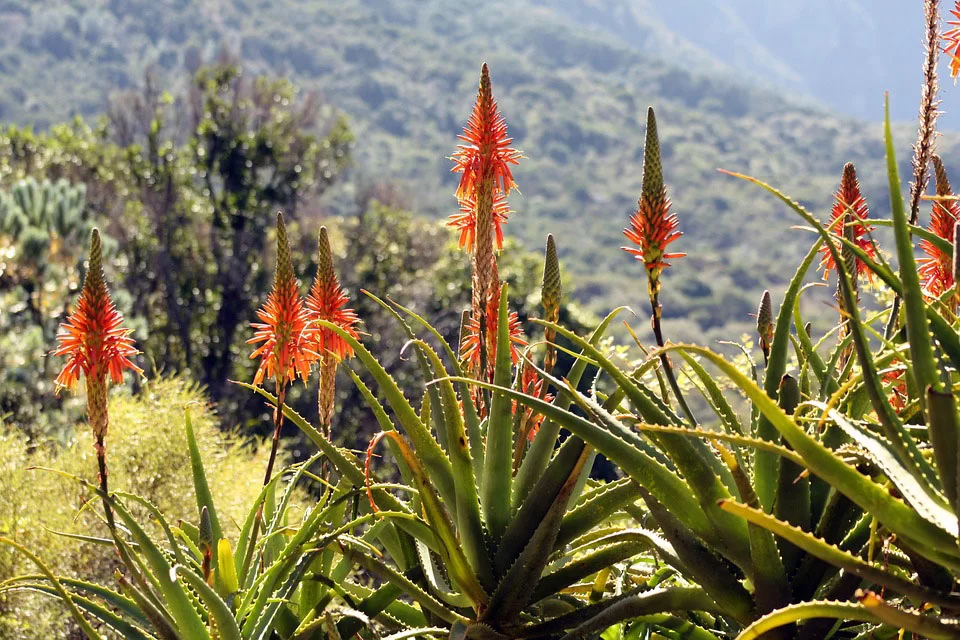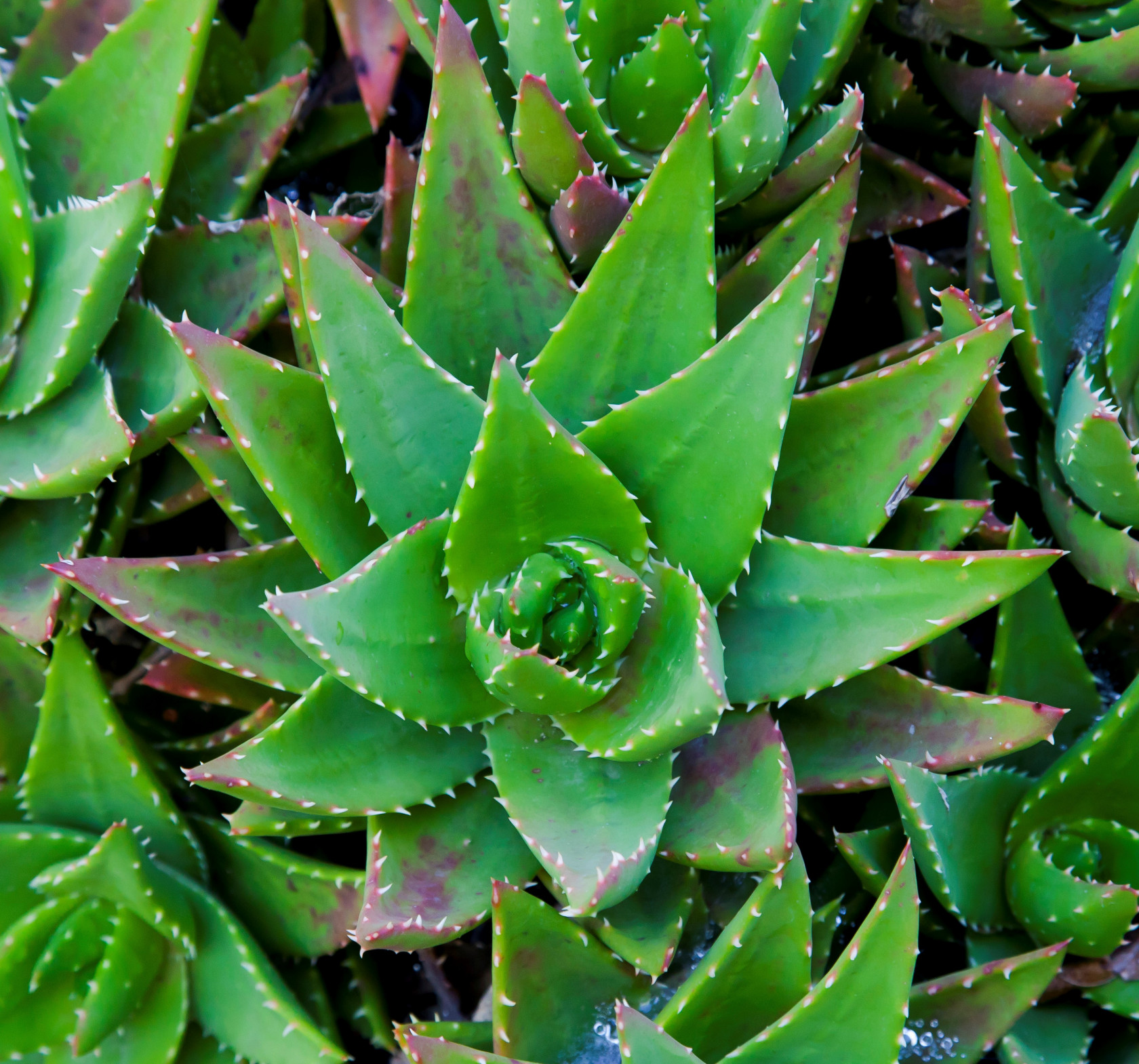Aloe
 Common Name: Aloe, barbados aloe
Common Name: Aloe, barbados aloe
Scientific Name: Aloe vera
Climate: Subtropical, tropical and temperate. It grows well from sea level up to 2,500 m altitude
Plant Description: Succulent native to Africa, well adapted to dry conditions.
It has a very short stem with thick and fleshy leaves that measure from 40 to 50 cm, in rosette shape with spiny edges, it’s colors go from gray to shiny green with stripes or sometimes speckled. It blooms in summer with a tall yellow – orange stalk up to 90 cm tall. The fruit has a triangular shape and contains several seeds.
Some varieties have a long stem from which the fleshy leaves sprout.
Cultivation: Aloe reproduces by cross pollination and multiplies by seeds or suckers.
It should be planted with minimum 2 meters of space between plants.
The plant can be reproduced by cuttings, detach a leaf from the stem at the very, wait until the cut scars and plant on substrate with adequate permeability and peat in order to allow it to grow roots and form a new plant.
Each parent plant produces 3 to 4 suckers throughout the growing season, these must be separated from the parent without hurting it, before transplantation in the field, suckers must be left in the shade for 5 to 10 days for root growth stimulation and adaptation speed up.
The slowest way is by planting the seed on sandy soil with very low humidity, it can take a year for it to be ready to transplant.
Aloe grows in hot desert weather where temperature should not go below 0º, intense frosts or repeated mild frosts will harm the pant. It can not tolerate cold or moisture.
Aloe can be planted in full sun or semi-shade. It will accept rocky, calcareous, sandy soil with good drainage.
Harvest is to be done when plant reaches adulthood, in between 2 to 5 years, the lowest most exterior leaves are the ones to be cut, because they are the oldest and concentrate the medicinal properties.
If the plant is irrigated it is possible to harvest two times, first in february-march and second around september-october, six months between harvests in any case. If there is no irrigation just one harvest can be done per year.
Aloe adapts itself to desert areas without any need for irrigation, suffers from almost no plagues and there are no known diseases and requires almost no fertilization, what it does is important is to keep it free from weed, since these will compete for resources and may create a moist environment that could damage the plant.
The plant must be protected from cold and moisture.
 Uses: Aloe’s active ingredient is called aloin, apart from being rich on vitamins and minerals. It has biologic antiviral, antibacterial, fungicidal, anti-inflammatory and healing properties.
Uses: Aloe’s active ingredient is called aloin, apart from being rich on vitamins and minerals. It has biologic antiviral, antibacterial, fungicidal, anti-inflammatory and healing properties.
There are 250 varieties, from which only 4 show substantial medicinal properties or are used as nourishment.
Aloe’s gel is used to alleviate mild burns, sores and skin conditions like eczema and ringworm.
Another major use of aloe is in the cosmetic industry.
References:
- https://www.tuasaude.com/es/sábila/
- https://es.wikipedia.org/wiki/Aloe
- https://es.wikipedia.org/wiki/Aloe_vera
- https://www.frontiersin.org/articles/10.3389/fpls.2016.01410/full
- https://agrotendencia.tv/agropedia/el-cultivo-de-aloe-vera/
- https://agriculturers.com/el-cultivo-de-aloe-vera/
- https://en.wikipedia.org/wiki/Aloe_vera
En español: Sábila
